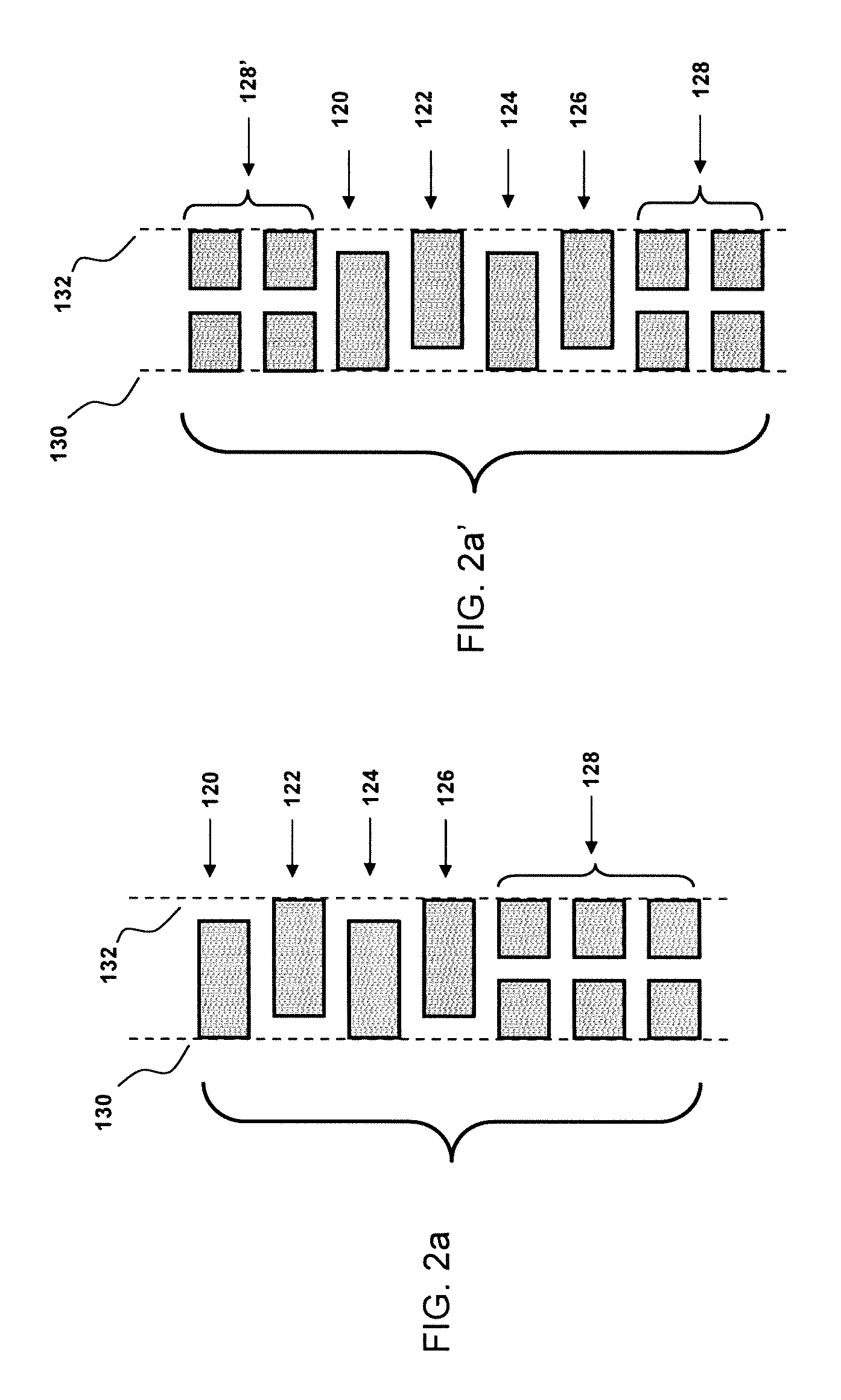Very low profile multilayer components
a multi-layer, low-profile technology, applied in the direction of fixed capacitors, stacked capacitors, fixed capacitor details, etc., can solve the problems of difficult control of termination application, significant high cost factor of multi-layer devices, so as to reduce inductance and resistance, the effect of facilitating testing
- Summary
- Abstract
- Description
- Claims
- Application Information
AI Technical Summary
Benefits of technology
Problems solved by technology
Method used
Image
Examples
first embodiment
[0085]With reference to FIG. 4a, it will be seen that a first electrode layer 120′ is printed on un-illustrated dielectric material with the screen printing mask 100 positioned in a central or middle location. The second electrode layer 122′ is printed after the screen printing mask 100 has been shifted to the left relative to the middle position of layer 120′. The next electrode layer 124′ is printed following return of the screen printing mask 100 to the same central or middle position it had occupied for the printing of layer 120′. Electrode layer 126′ is produced with a left shift of the screen printing mask 100 to the same position occupied by the mask for printing of electrode layer 122′. Finally screen printing mask 100 is repositioned to the same central or middle position it previously occupied for the printing of electrode layers 120′ and 124′ so that electrode layer 128′ may be printed. As with the present subject matter, it should be kept in mind that the actually provid...
third exemplary embodiment
[0090]With reference now to FIGS. 5a-5h, the present subject matter will now be described. This third exemplary embodiment of the present subject matter again employs a single screen printing mask 500 defined by a plurality of identical printing openings 510, 512, and 514, portions of some of which are again illustrated in shading to more clearly delineate those portions that will correspond to electrode layers. In a manner similar to the previously described second exemplary embodiment, the third exemplary embodiment employs masks 500 that are positioned in only one of two specific locations to produce the desired devices. In this instance, the devices produced have different electrical and physical characteristics than the devices described with respect to the first and second exemplary embodiments in that feedthrough and Pi filter structures may be created, as will be explained further with respect to FIGS. 5f and 5h.
[0091]As illustrated in FIG. 5a, in a first lateral position r...
fourth exemplary embodiment
[0099]With reference now to FIGS. 6a-6h, the present subject matter will now be described. This fourth exemplary embodiment of the present subject matter again employs a single screen printing mask 600 defined by a plurality of identical printing openings 610, 612, portions of some of which are again illustrated in shading to more clearly delineate those portions that will correspond to electrode layers. In a manner similar to the previously described second exemplary embodiment, the fourth exemplary embodiment employs masks 600 that are positioned in only one of two specific locations to produce the desired devices. The two mask positions in this embodiment are, however, somewhat different from previously discussed embodiments in that the two mask positions are reached by translation of the mask in both a lateral and vertical direction.
[0100]In this instance, the devices produced have different electrical and physical characteristics than the devices described with respect to the f...
PUM
| Property | Measurement | Unit |
|---|---|---|
| thick | aaaaa | aaaaa |
| thickness | aaaaa | aaaaa |
| thick | aaaaa | aaaaa |
Abstract
Description
Claims
Application Information
 Login to View More
Login to View More - R&D Engineer
- R&D Manager
- IP Professional
- Industry Leading Data Capabilities
- Powerful AI technology
- Patent DNA Extraction
Browse by: Latest US Patents, China's latest patents, Technical Efficacy Thesaurus, Application Domain, Technology Topic, Popular Technical Reports.
© 2024 PatSnap. All rights reserved.Legal|Privacy policy|Modern Slavery Act Transparency Statement|Sitemap|About US| Contact US: help@patsnap.com










